Lysosome activity is modulated by multiple longevity pathways and is important for lifespan extension in C. elegans
- PMID: 32482227
- PMCID: PMC7274789
- DOI: 10.7554/eLife.55745
Lysosome activity is modulated by multiple longevity pathways and is important for lifespan extension in C. elegans
Abstract
Lysosomes play important roles in cellular degradation to maintain cell homeostasis. In order to understand whether and how lysosomes alter with age and contribute to lifespan regulation, we characterized multiple properties of lysosomes during the aging process in C. elegans. We uncovered age-dependent alterations in lysosomal morphology, motility, acidity and degradation activity, all of which indicate a decline in lysosome function with age. The age-associated lysosomal changes are suppressed in the long-lived mutants daf-2, eat-2 and isp-1, which extend lifespan by inhibiting insulin/IGF-1 signaling, reducing food intake and impairing mitochondrial function, respectively. We found that 43 lysosome genes exhibit reduced expression with age, including genes encoding subunits of the proton pump V-ATPase and cathepsin proteases. The expression of lysosome genes is upregulated in the long-lived mutants, and this upregulation requires the functions of DAF-16/FOXO and SKN-1/NRF2 transcription factors. Impairing lysosome function affects clearance of aggregate-prone proteins and disrupts lifespan extension in daf-2, eat-2 and isp-1 worms. Our data indicate that lysosome function is modulated by multiple longevity pathways and is important for lifespan extension.
Keywords: C. elegans; DAF-16/FOXO; SKN-1/NRF2; aging; cell biology; insuin/igf-1 signaling; longevity pathways; lysosome.
© 2020, Sun et al.
Conflict of interest statement
YS, ML, DZ, XL, CY No competing interests declared, XW Reviewing editor, eLife
Figures
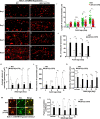
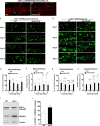
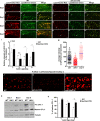


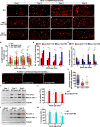




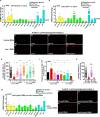
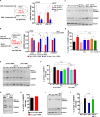
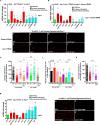




Similar articles
-
End-of-life targeted degradation of DAF-2 insulin/IGF-1 receptor promotes longevity free from growth-related pathologies.Elife. 2021 Sep 10;10:e71335. doi: 10.7554/eLife.71335. Elife. 2021. PMID: 34505574 Free PMC article.
-
Mutation of daf-2 extends lifespan via tissue-specific effectors that suppress distinct life-limiting pathologies.Aging Cell. 2021 Mar;20(3):e13324. doi: 10.1111/acel.13324. Epub 2021 Feb 20. Aging Cell. 2021. PMID: 33609424 Free PMC article.
-
Insulin/IGF-1-mediated longevity is marked by reduced protein metabolism.Mol Syst Biol. 2013 Jul 2;9:679. doi: 10.1038/msb.2013.35. Mol Syst Biol. 2013. PMID: 23820781 Free PMC article.
-
The search for DAF-16/FOXO transcriptional targets: approaches and discoveries.Exp Gerontol. 2006 Oct;41(10):910-21. doi: 10.1016/j.exger.2006.06.040. Epub 2006 Aug 24. Exp Gerontol. 2006. PMID: 16934425 Review.
-
Studies of Caenorhabditis elegans DAF-2/insulin signaling reveal targets for pharmacological manipulation of lifespan.Aging Cell. 2006 Feb;5(1):31-7. doi: 10.1111/j.1474-9726.2006.00188.x. Aging Cell. 2006. PMID: 16441841 Free PMC article. Review.
Cited by
-
A genetic screen identifies new steps in oocyte maturation that enhance proteostasis in the immortal germ lineage.Elife. 2021 Apr 13;10:e62653. doi: 10.7554/eLife.62653. Elife. 2021. PMID: 33848238 Free PMC article.
-
Inhibition of S6K lowers age-related inflammation and increases lifespan through the endolysosomal system.Nat Aging. 2024 Apr;4(4):491-509. doi: 10.1038/s43587-024-00578-3. Epub 2024 Feb 27. Nat Aging. 2024. PMID: 38413780 Free PMC article.
-
Regulation of Aging and Longevity by Ion Channels and Transporters.Cells. 2022 Mar 31;11(7):1180. doi: 10.3390/cells11071180. Cells. 2022. PMID: 35406743 Free PMC article. Review.
-
Calcineurin-Dependent Homeostatic Response of C. elegans Muscle Cells upon Prolonged Activation of Acetylcholine Receptors.Cells. 2023 Sep 3;12(17):2201. doi: 10.3390/cells12172201. Cells. 2023. PMID: 37681933 Free PMC article.
-
Unveiling autophagy and aging through time-resolved imaging of lysosomal polarity with a delayed fluorescent emitter.Chem Sci. 2023 Nov 13;15(1):102-112. doi: 10.1039/d3sc02450d. eCollection 2023 Dec 20. Chem Sci. 2023. PMID: 38131076 Free PMC article.
References
Publication types
MeSH terms
Substances
Grants and funding
LinkOut - more resources
Full Text Sources
Other Literature Sources
Research Materials
Miscellaneous

